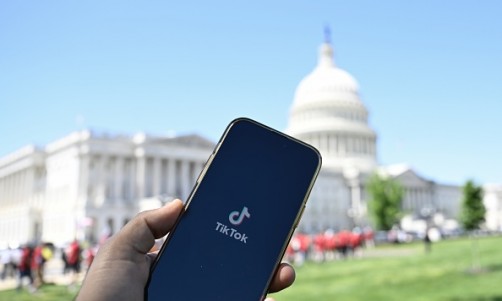Industrial companies that rely on intelligent networking of machines and processes with the help of information and communication technology are considered a popular target for cyber criminals. For companies belonging to this sector, it is therefore existential to pay the utmost attention to the security of their own IT infrastructures.
Statistics show: Fewer but more dangerous DDoS attacks
There are statistics such as the DDoS report of the Link11 Security Operations Center (LSOC) that show very impressively what consequences professional cyberattacks have for the economy and thus also for industrial companies every year. According to the latest report for the first half of 2022, the number of DDoS attacks has temporarily decreased by 80 percent (measured against the same period last year). The reasons for this decrease could be, among other things, the decline in DDoS extortion attempts and, above all, the shutdown of important darknet marketplaces such as Hydra.
However, the attacks were carried out much more professionally and reached their target three times as fast. Because while it took 184 seconds from the start of the attack to maximum damage in 2021, it was only 55 seconds in the first half of 2022. The problem for the companies attacked here is that their own defence systems do not always have the same speed, which can open up a fatal security gap.
There was also an increase in terms of the bandwidth of such attacks, according to the DDoS report, from 266 Gbps in 2021 to 325 Gbps in the first six months of 2022. In addition, the so-called average packet rate per second also increased from 277,000 to 1.5 million during this period.
Not only the number of DDoS attacks has decreased, but also the number of so-called multi-vector attacks. In multi-vector attacks, the attackers target several areas of vulnerability simultaneously, especially in the areas of transport, application and protocol. The more targets and protocols are abused in a single attack, the more difficult it is to defend against such an attack.
According to the DDoS report, many more targeted, concentrated and resource-saving attacks were carried out in the past six months. One third of the attacks carried out in the first half of the year (about 35%) were multi-vector attacks. From January to June 2021, two-thirds (65%) were still multi-vector attacks. The highest number of simultaneously used vectors was eleven, according to the report.
One attack method belonging to the multi-vector attacks that was also registered by LSOC in the first six months of 2022 was the reflection amplification attack. The fact that over a dozen amplification techniques were registered shows how popular this method is and how quickly it is evolving. Attack techniques used included DNS or NTP reflection amplification. Such attacks are characterised by high amplification factors, which are 100-fold amplification for DNS attacks and up to 200-fold amplification for NTP attacks. Vectors such as SSDP or SNMP have also been used for attacks.
The Corona pandemic has implications for cyber security
In the wake of the Corona pandemic, social and economic life has changed radically. Above all, the infection control measures and the restrictions they necessitated caused digitalisation to advance more rapidly in many places. The Digital Barometer of the German "SZ" states that more than 90 percent of all people living in Germany over the age of 14 go online regularly and no less than 94 percent of working people in the Federal Republic use the internet for their work.
The possibility of a home office, the shift of data to the cloud, optimisation of IT services in companies and the improvement of web services are driving the digital transformation in numerous areas of life.
However, it should not go unmentioned that there are also factors which are slowing down digitalisation in other areas, which unfortunately also include the economy. According to a Bitkom study from June 2022, these factors are, for example, Russia's war of aggression against The Ukraine, stalled supply chains, sharply rising costs for energy, and soaring inflation.
What remains in this situation is the danger of cyberattacks and the resulting, often very cost-intensive, consequences. It is noticeable that state institutions, critical services and sensitive infrastructures are increasingly the target of such attacks. Web-based services in particular are an attractive target for cyber criminals. This is because they have the possibility to make entire portals inaccessible for a significant period of time.
These prolonged downtimes in turn cause customers to fear that their money is no longer safe or has already been lost. DDoS attacks therefore not only cause financial damage, but also damage the reputation of companies that are not able to efficiently defend against such attacks.
Highly efficient cyber security solutions for Industry 4.0
High-performance IT security solutions are necessary to efficiently secure IT networks of Industry 4.0 companies. They can successfully fend off DDoS attacks and quickly and effectively secure the company's own data and infrastructures. Infrastructure DDoS protection or web DDoS protection, for example, can provide useful support here. They are based on a cloud-based system and rely on a globally available "DDoS Scrubbing Centre Architecture". With both, DDoS attacks can be warded off early and intelligently. A web DDoS protection system uses the "always-on principle" with fully automated, around the clock functionality.
Cyber attacks on Industry 4.0 companies can paralyse their networks and IT infrastructures for a long time and cause billions in damage to the German economy. In order to efficiently secure one must stay ahead of the hackers technologically. This is achieved primarily by investing in new, increasingly powerful technologies.
--
Marc Wilczek, managing director at Link11
Marc Wilczek is the COO of Link11, which is a leading IT security provider in the field of protecting web services and digital infrastructures against cyber-attacks. With its North American headquarters in Vancouver, the company offers fully automated, cloud-based anti-DDoS protection with the fastest Time to Mitigate (TTM) available on the market. Link11 utilizes AI and machine learning to ensure that its TTM accurately recognizes malicious traffic as fast as possible.
Wilczek has more than two decades of leadership and management experience. At Link11, he is responsible for strategic business development, growth initiatives as well as marketing and sales. In addition to management functions within the Deutsche Telekom Group, he was previously Senior Vice President Asia-Pacific/Latin America/Middle East and Africa at the eHealth group CompuGroup Medical and headed the Asian business at the IT security expert Utimaco Safeware (now Sophos), among others. He has a Master of Science in Management from The London Business School and was awarded the Sloan Fellowship.















